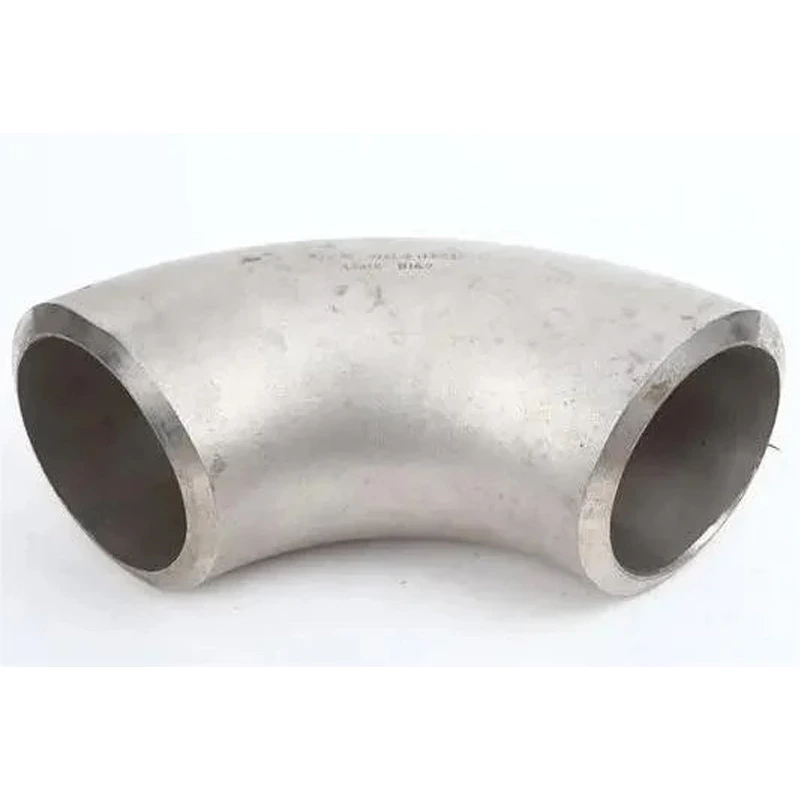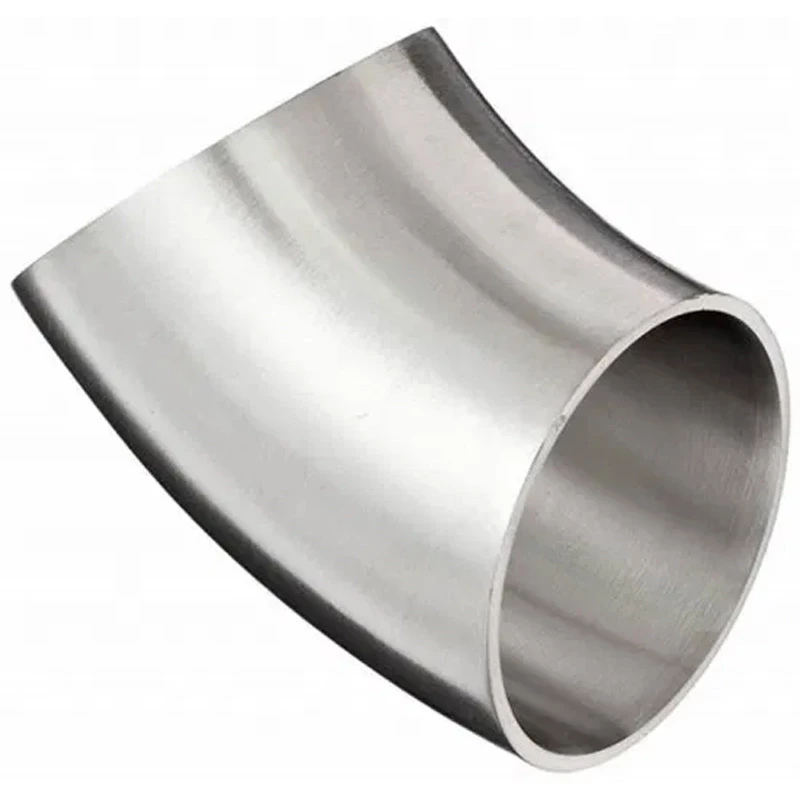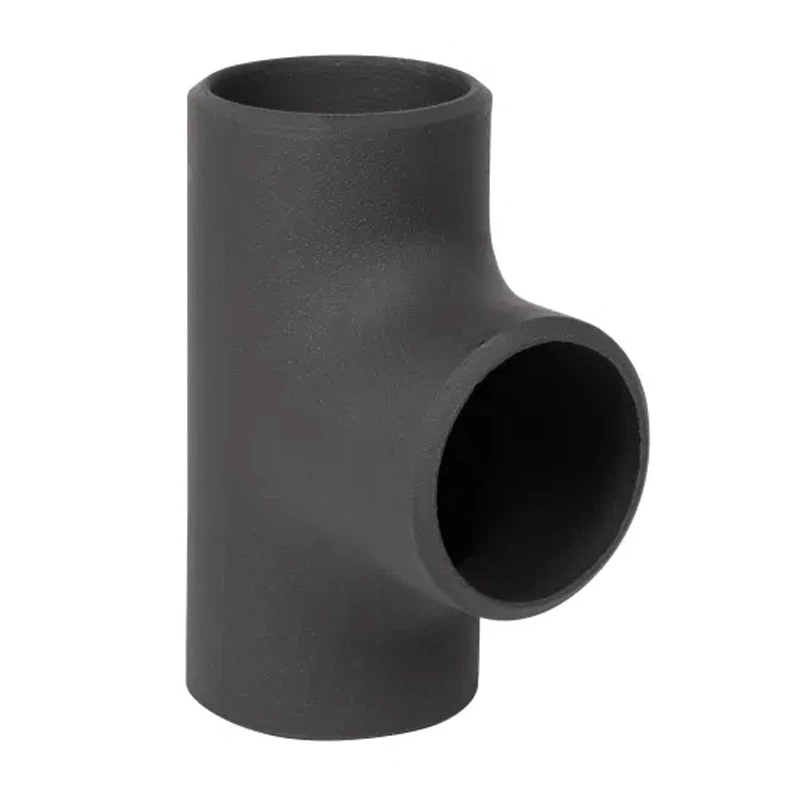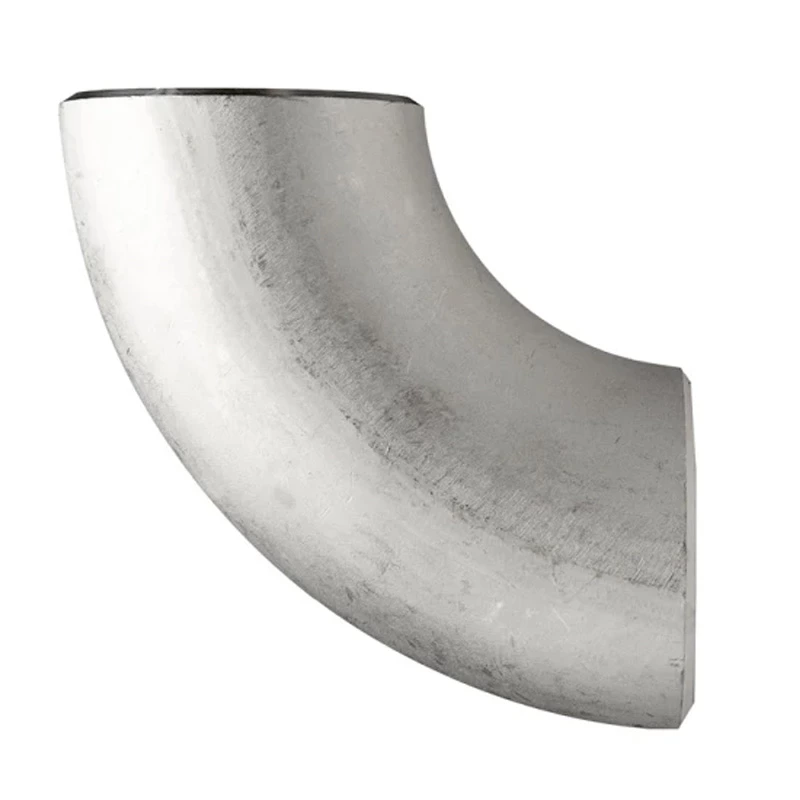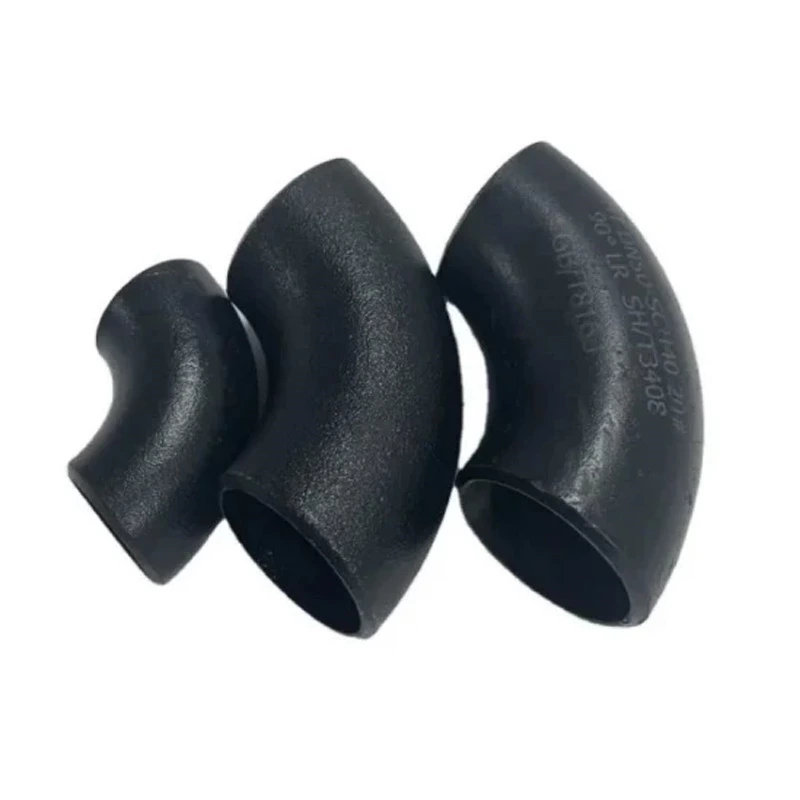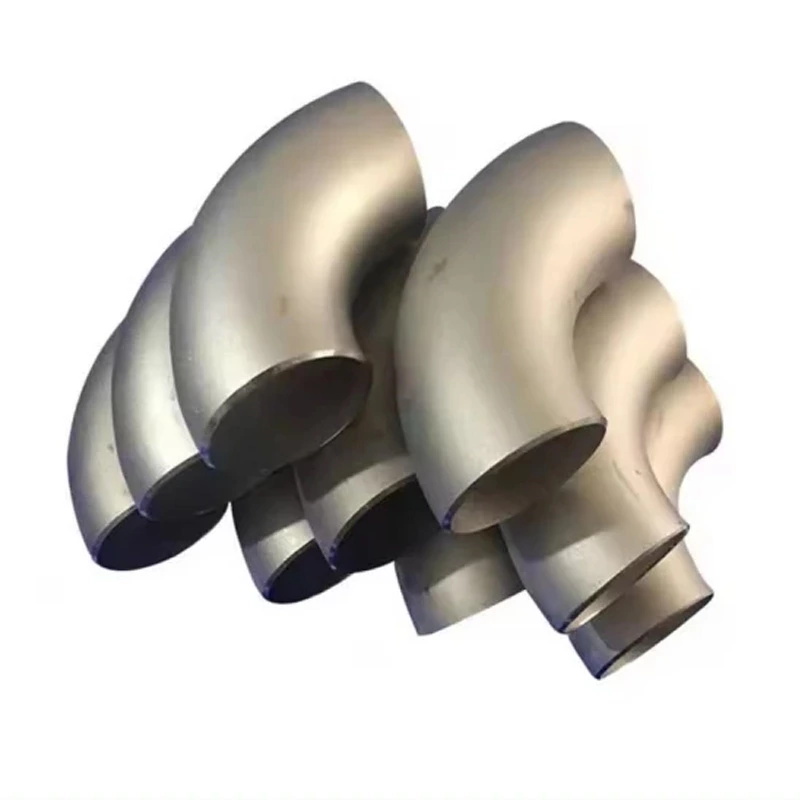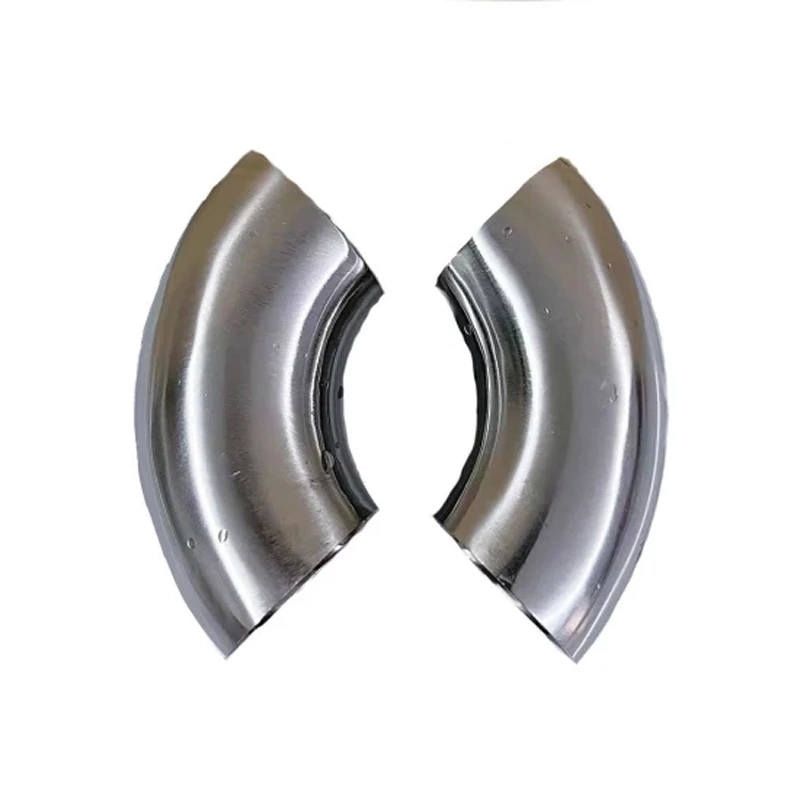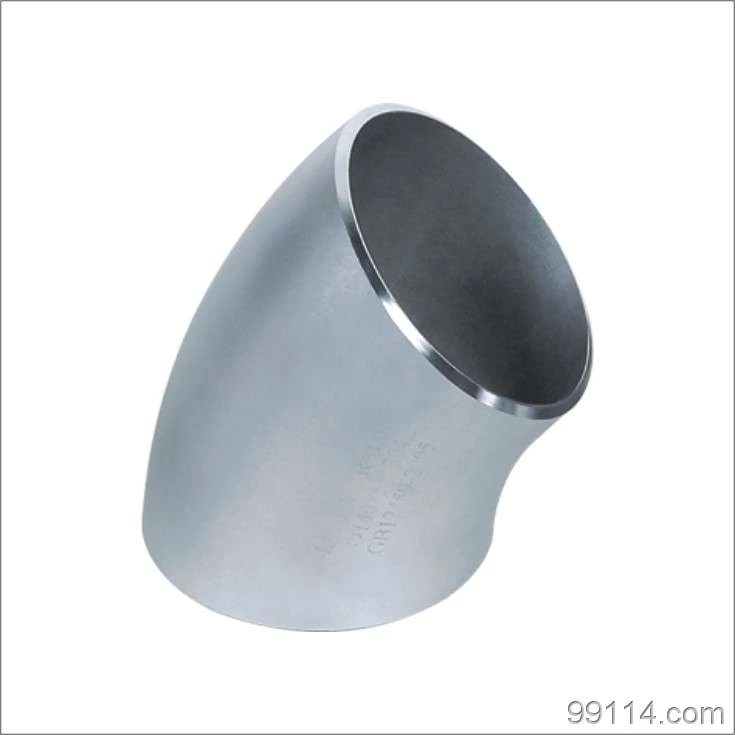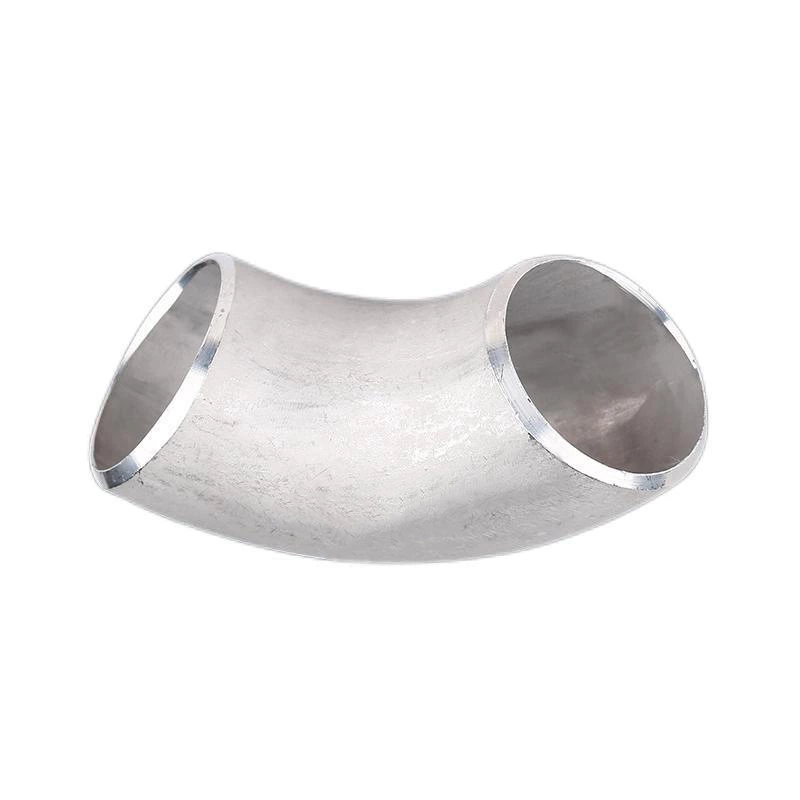Cutting Of Stainless Steel Stamping Pipe Fittings, Elbows And Other Parts
Stainless Steel Weld Elbow has high hardening property after welding and is easy to crack. If the same type of stainless steel stamping elbow is used for welding, it is necessary to preheat at more than 300℃ and slow cooling at about 700℃ after welding. If the weldment cannot be heat treated after welding, stainless steel stamping elbow welding rods should be used. Stamping elbow skin has titanium calcium type and low hydrogen type. Titanium calcium type can be used for AC and DC, but the penetration depth is shallow during AC welding and it is easy to turn red, so DC power supply should be used as much as possible. When stamping elbow is welded, carbides are precipitated by repeated heating, which reduces the corrosion resistance and mechanical properties. In order to prevent intergranular corrosion caused by heating, the welding current should not be too large, about 20% less than that of carbon steel electrodes, the arc should not be too long, and the interlayer should be cooled quickly, and a narrow weld is preferred. Stamping elbow, in order to improve the corrosion resistance and weldability, appropriate amount of stability elements Ti, Nb, Mo, etc. are appropriately added, and the weldability is better than that of stainless steel stamping elbow. When using the same type of chromium stainless steel welding rod, preheating above 200℃ and tempering at about 800℃ after welding should be carried out. If the weldment cannot be heat treated, chromium-nickel stainless steel welding rods should be used. The welding rod should be kept dry during use. The titanium calcium type should be dried at 150℃ for 1 hour, and the low hydrogen type should be dried at 200-250℃ for 1 hour (it cannot be dried repeatedly, otherwise the skin will easily crack and peel off). Prevent the welding rod skin from sticking oil and other dirt, so as not to increase the carbon content of the weld and affect the quality of the weldment.
Below is an overview of the cutting of various components of stainless steel pipe fittings elbows: The cutting of various components of stamping elbows is economical. In the exploration of technical improvement, the company pays special attention to the milling of stainless steel stamping elbow bags that are not afraid of chemicals and high temperatures. The decisive factor affecting the economy when milling stamping elbows is the compromise between the milling power of stamping elbows and the service time. In one of its experiments, the steel bag was subjected to fifteen wet feeds and then ten dry millings. After a long period of operation, knife nodules and slight free surface wear will occur, so all steel bags should be wet processed in the future. Then use a contour milling cutter with a diameter of 81 mm and six blades. Under the same cutting value, the plane above the stainless steel stamping elbow bag is dry milled for 16.7 points. Compared with the disc cutter of competitors, the service life of this stainless steel stamping elbow is significantly improved.
There are many things to pay attention to when using and maintaining stamping elbows. Users are required to use them according to the corresponding methods and use and maintain them according to accurate and fair methods. The precautions are as follows:
1. When using the device, the pipe fittings can be directly installed on the pipeline according to the connection method and installed according to the location of use. Under normal circumstances, it can be installed at any position of the pipeline, but it needs to be easy to operate the inspection. Pay attention to the flow direction of the medium of the cut-off pipe fittings should be from the bottom of the longitudinal valve disc upward, and the pipe fittings can only be installed horizontally. Pay attention to the sealing when installing the pipe fittings to avoid leakage and affect the normal operation of the pipeline.
2. When the ball valve, stop valve and gate valve of the pipe fittings are used, they can only be fully opened or fully closed. They are not allowed to be used to adjust the flow rate to prevent the sealing surface from being eroded and accelerated wear. There are reverse sealing devices in the gate valve and the upper threaded stop valve. Tightening the handwheel can prevent the medium from leaking from the packing.
3. Pipe fittings that are stored for a long time should be inspected regularly. The exposed processed surface should be kept clean and dirt should be removed regularly. They should be stored neatly in a ventilated and dry place indoors. Stacking or outdoor storage is prohibited. Always keep the pipe fittings dry and ventilated, keep the device clean and tidy, and store them in accordance with the correct storage method.
4. The bolts of the packing gland of the pipe fitting valve should be tightened evenly and should not be pressed into a crooked state to avoid bumps that hinder the movement of the valve stem or cause leakage.
5. During the use of pipe fittings, they should always be kept clean, and the transmission threads should be lubricated regularly. When a fault is found, it should be stopped immediately, and the cause should be found out and eliminated.
6. When using handwheels for pipe fittings, please do not use levers or other tools to avoid damaging valves. The handwheel rotates clockwise to close, and vice versa to open.
Stamped elbows have the characteristics of stable connection, convenient construction, good hygienic performance, small flow pressure loss, strong system compatibility, both open and concealed installation, no maintenance, excellent economic performance, and wide application range. Pipe fittings are suitable for civil low-pressure fluid transportation such as hot and cold water, direct drinking water, heating, air conditioning, fire protection, gas, etc., and can also be used for low-pressure fluid transportation in industries such as beverages, food, and chemicals. When stamped pipe fittings are welded, they are repeatedly heated to precipitate carbides, reducing their corrosion resistance and mechanical properties. Pipe fittings have titanium calcium type and low hydrogen type. Titanium calcium type can be used for AC and DC, but the melting depth is shallow during AC welding, and it is easy to turn red, so pipe fittings should use DC power as much as possible. In order to prevent interlaminar erosion of pipe fittings due to heating, the welding current should not be too large, about 20% less than that of carbon steel electrodes, the arc should not be too long, the interlayer cooling should be fast, and a narrow weld is preferred.
